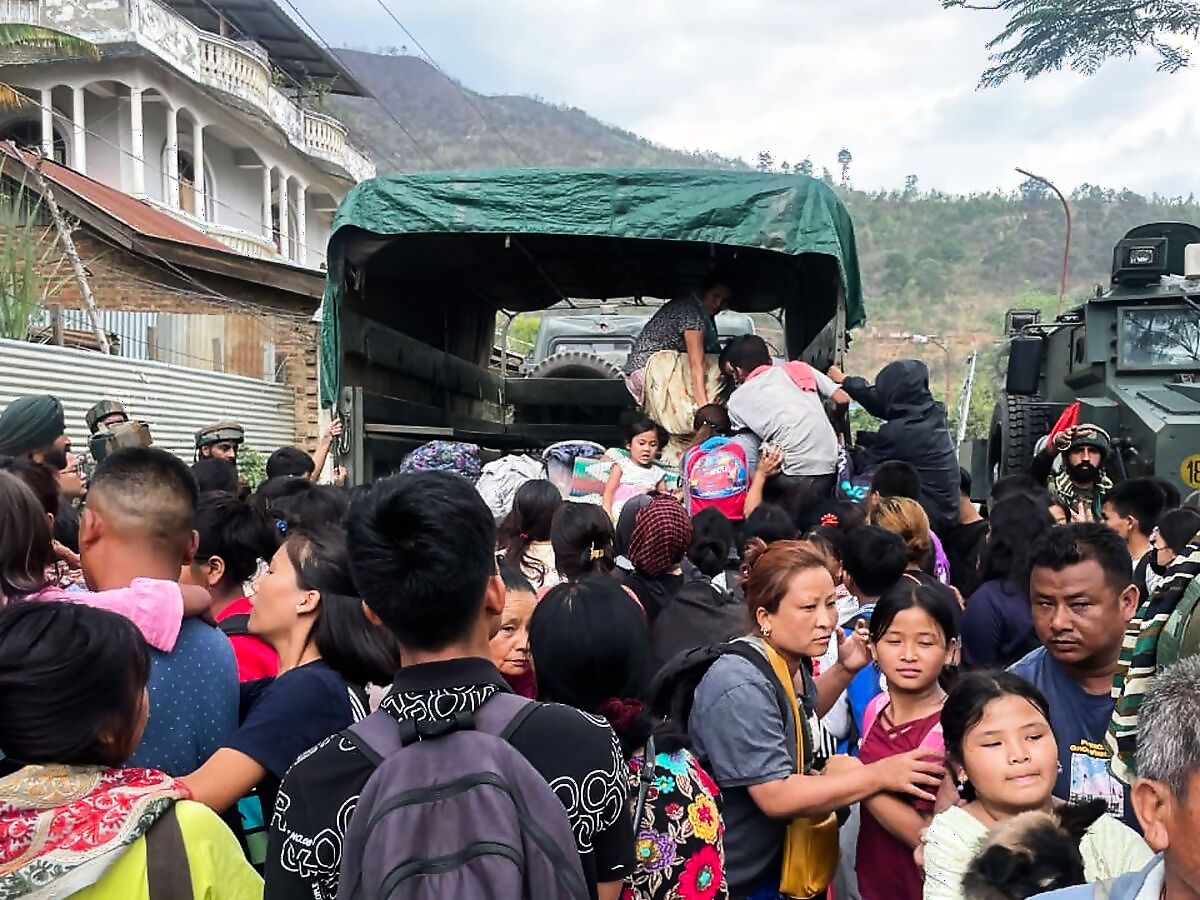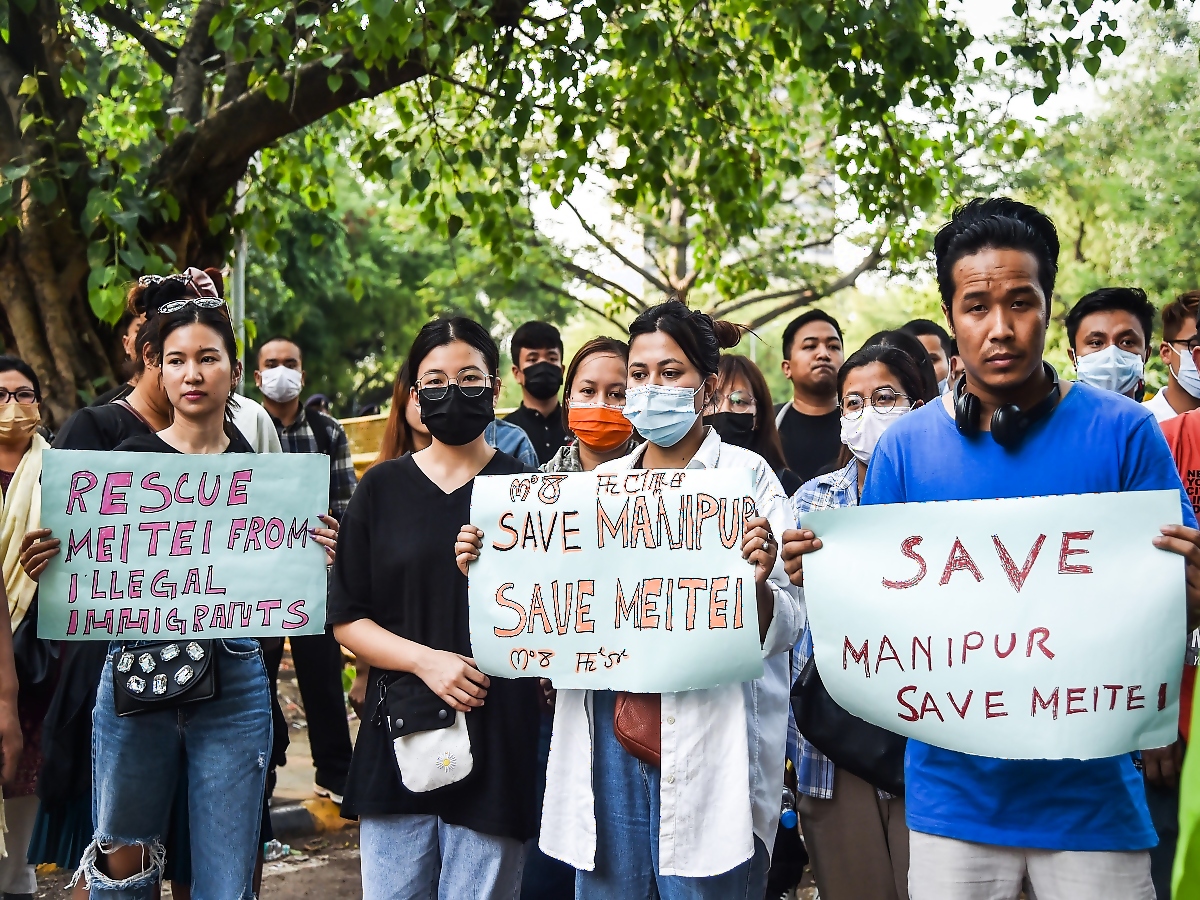
views
The video of two women from Kuki community being paraded naked and sexually assaulted in Manipur has sparked outrage with Prime Minister Narendra Modi saying that he is pained and his heart was filled with anger.
The Supreme Court also directed the Centre and state government to take immediate action and said that it is really disturbed over the video. Meanwhile, Manipur Chief Minister said it was a crime against humanity and promised strict action. Four people, including the main accused, who were part of the mob in the viral video, have been arrested.
The disturbing incident recorded on video took placed on May 4 in Kangpokpi district, but went viral on July 19, when the internet ban was lifted.
The viral video has once again brought the ethnic clashes, schisms and tribal divide in Manipur into focus.
Why is There Violence in Manipur?
The violence in Manipur has been going on since May 3, when a ‘Tribal Solidarity March’ was organised in Churachandpur district to protest against the Meitei community’s demand for Scheduled Tribe (ST) status.

During the march, an armed mob allegedly attacked people of the Meitei community, leading to retaliatory attacks in the valley districts, which escalated throughout the state. The violence has led to more than 160 deaths, and several injuries.
The violence in Manipur began when Kuki clashed with Meitei, over economic, social, and political benefits and quotas given to the tribes.
Who are Kukis?
Kukis, one of the several hill tribes in India, are an ethnic group inhabiting the North-eastern states of Manipur, Mizoram, Meghalaya, Assam, Tripura and Nagaland.
The Kukis live mainly in the hills while Churachandpur in Manipur is their stronghold. However, they are also present in significant numbers in Chandel, Kangpokpi, Tengnoupal, and Senapati districts of Manipur.

It is believed that Kuki people are native to the Mizo Hills, a mountainous region in the south-eastern part of Mizoram. The community is further divided into 20 sub-tribes.
Thought many people from the Kuki tribe converted into Christianity, especially to Protestantism, in the late 19th and early 20th centuries, they practice local culture and traditions including rituals like animism, animal sacrifices, and traditional festivals to appease their Gods.
Who are Meiteis?
The Meiteis, who are the dominant ethnic majority in Manipur, are predominantly Hindus and also follow their ancient animist beliefs and practices. They mostly live in the Imphal Valley region and a significant population is settled in the other Indian states of Assam, Tripura, Nagaland, Meghalaya, and Mizoram.

A small number of the Meiteis, around 8 percent, are Muslims and are called Meitei Pangals. The Meiteis are more educated and also better represented in business and politics than other tribal groups.
Manipur Violence: A Religious or Tribal Issue?
Though the Meiteis, who are in majority and predominantly Hindus, and Kukis, who are in minority and mostly Christians, have religious differences, but the present issue is centred around reservation, land rights and affirmative action.
The conflict between Meiteis and Kukis is the extension of hills-versus-plains conflict seen in many other places in the northeast and has existed for a very long time. But, the May violence started in Manipur after the All Tribal Student Union Manipur (ATSUM) organised a ‘Tribal Solidarity March’ in Churachandpur district against the Meitei demand for Scheduled Tribe status. The march was organised by tribal groups including Nagas, Zomis, and Kukis who are around 40 percent of the state’s population.

The Meitis, on the other hand comprise around 53 percent of the state population, but are scattered across just 10 percent of the state. But, the tribals comprising less than half of the population, are spread across 90 percent of land.
The Meiteis demand the ST status and blame their problems on the “large-scale illegal immigration” from Myanmar and Bangladesh.
The Kukis oppose the inclusion of Meiteis in the ST communities of Manipur since they fear that they would lose their job opportunities and other affirmative actions to the Meiteis, who are much advanced, educated and better represented in business and politics.
The Kukis further say that the Meitei community is already classified under Scheduled Castes (SC) or Other Backward Classes (OBC).















Comments
0 comment